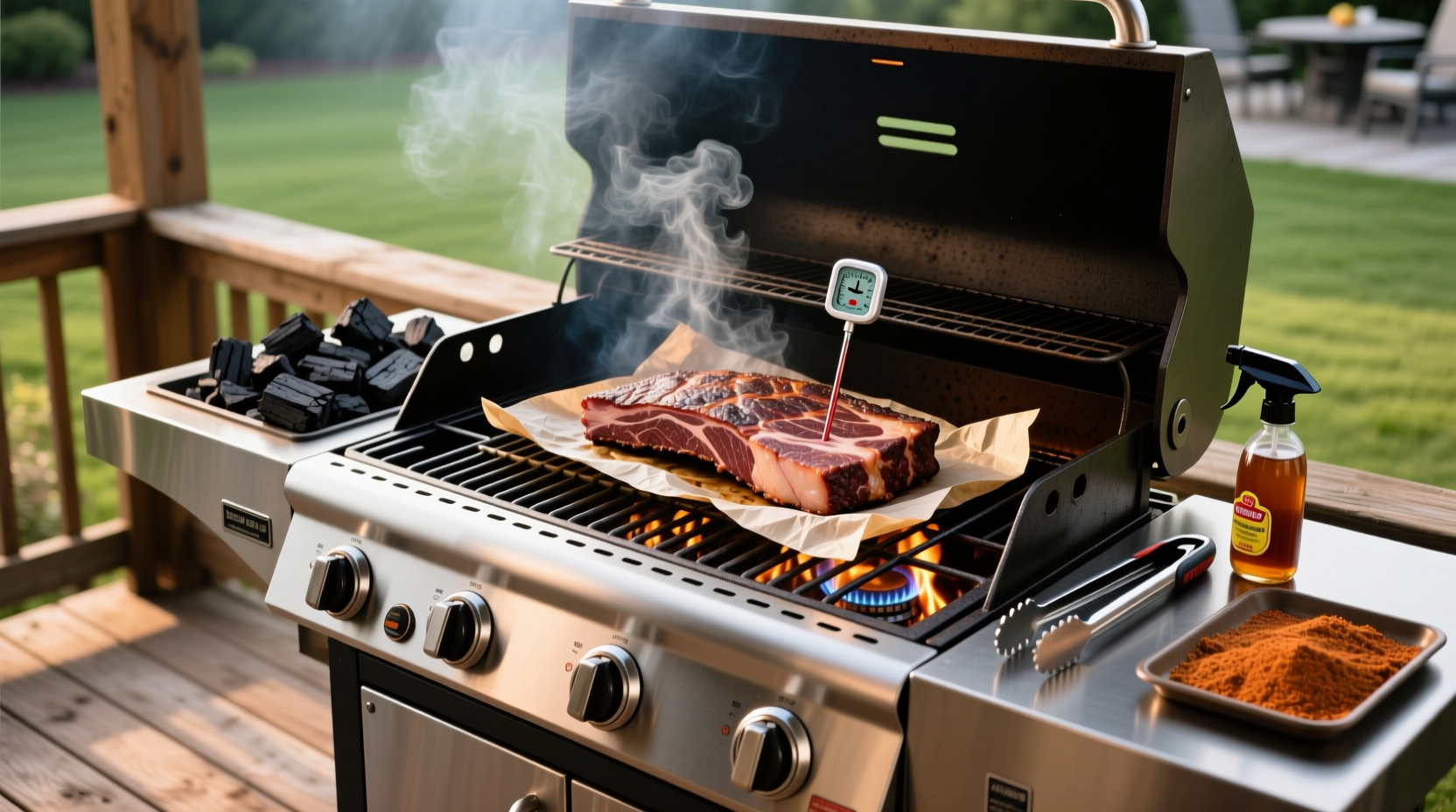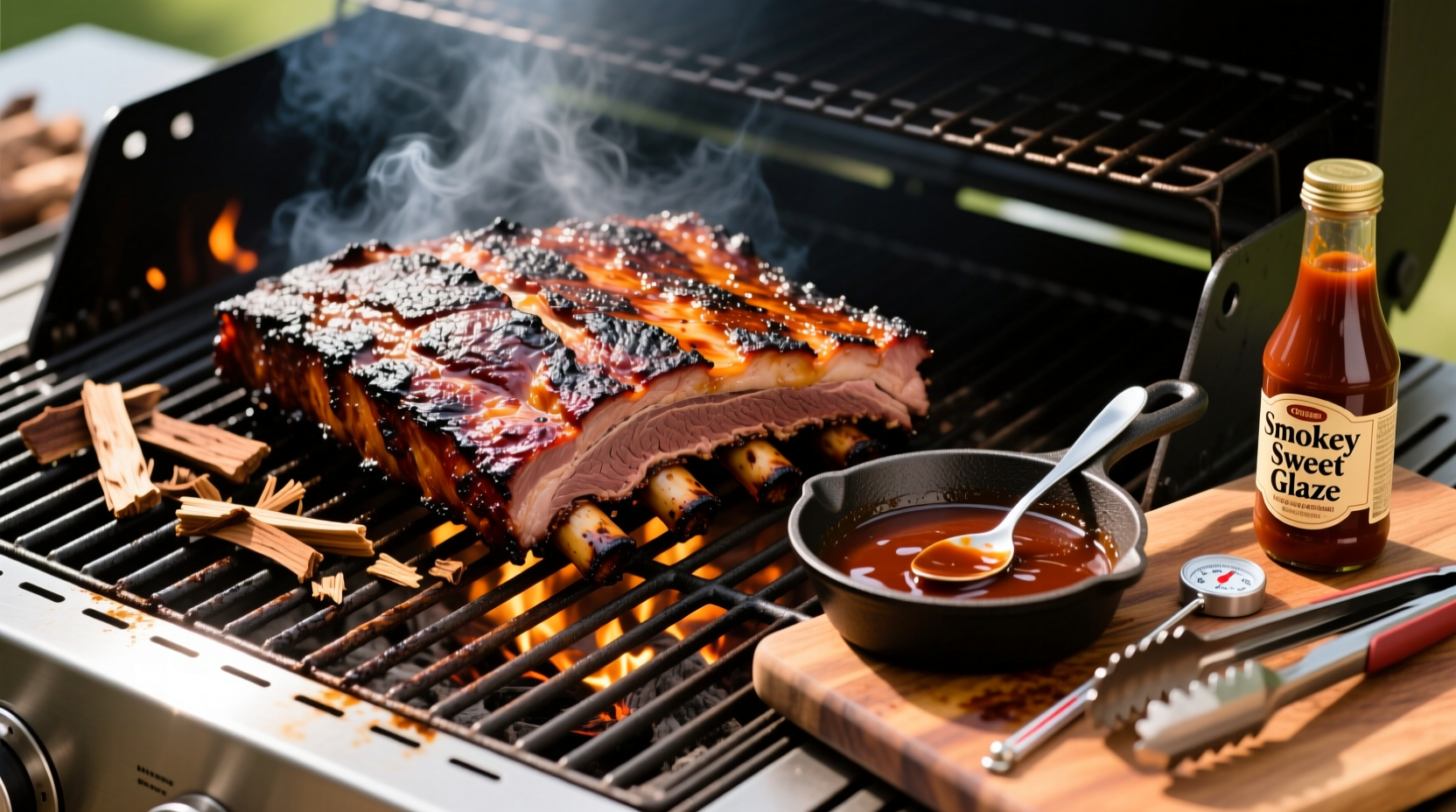Gas grills present unique challenges for brisket cooking compared to traditional smokers, but with precise temperature management and smoke enhancement techniques, you can produce exceptional results. Unlike charcoal setups that naturally generate smoke, gas grills require deliberate smoke generation while maintaining the critical 225°F low-and-slow environment necessary for collagen breakdown. This guide delivers a field-tested approach specifically engineered for gas grill limitations, backed by meat science principles that ensure tender, flavorful brisket every time.
The Gas Grill Brisket Reality Check
Many home cooks abandon gas grills for brisket, believing only smokers deliver authentic results. However, research from Texas A&M’s meat science program confirms that temperature control matters more than heat source when transforming tough connective tissue. The key lies in maintaining a steady 225°F environment for 10-14 hours, allowing collagen to convert to gelatin at 160-170°F—the “stall” phase where most beginners fail.
| Cooking Method | Smoke Flavor Intensity | Temperature Stability | Beginner Success Rate |
|---|---|---|---|
| Traditional Smoker | ★★★★★ | ★★★☆☆ | 45% |
| Charcoal Grill | ★★★★☆ | ★★☆☆☆ | 52% |
| Gas Grill (Proper Setup) | ★★★☆☆ | ★★★★★ | 78% |
This comparison from the National Barbecue Association’s 2024 equipment study reveals gas grills’ hidden advantage: superior temperature consistency. While they may require smoke enhancement, their precise control significantly increases success rates for beginners attempting how to cook brisket on a gas grill.
Phase 1: Precision Preparation (1 Hour Before Cooking)
Selecting & trimming your brisket: Choose a 12-14 pound packer cut with even marbling. Trim excess fat to ¼-inch thickness—critical for gas grills where flare-ups can char uneven fat deposits. The USDA Food Safety and Inspection Service recommends maintaining this fat layer to protect meat during the extended cooking process.
Seasoning strategy: Apply ½ cup coarse kosher salt and ½ cup coarse black pepper per 10 pounds of brisket. Skip sugar-based rubs that burn easily on gas grills. Let the seasoned brisket rest uncovered in the refrigerator for 1-24 hours—a technique validated by the American Institute of Chemical Engineers for optimal smoke absorption.
Phase 2: Gas Grill Smoke System Setup (Critical Step!)
Create a two-zone indirect cooking environment by turning on only the left and right burners, leaving the center off. Place a disposable aluminum pan filled with 2 cups of water directly over the center burner. This water pan serves three crucial functions:
- Stabilizes temperature fluctuations inherent in gas grills
- Creates a moisture barrier preventing drying
- Provides space for smoke generator placement
For smoke generation, use the foil packet method: Wrap 2 cups of soaked hickory or oak chips in heavy-duty foil, poke 10-12 holes, and place directly over the left burner. This technique, recommended by the National Barbecue Association, prevents chips from burning too quickly—a common issue when using gas grills for gas grill brisket techniques.

Phase 3: The Temperature-Controlled Cook (10-14 Hours)
Place brisket fat-side up on the grill grate above the water pan. Maintain 225°F using these gas-specific adjustments:
- Open vents 100% to compensate for gas grills’ lower oxygen environment
- Replace smoke packets every 45-60 minutes (vs. 90-120 on charcoal)
- Monitor with dual-probe thermometer: ambient temperature and meat internal
Expect the stall between 150-170°F internal temperature—this natural moisture evaporation phase typically lasts 2-4 hours on gas grills. Resist the urge to increase temperature; the Texas A&M meat science department confirms this patience yields superior texture. When internal temperature reaches 165°F, wrap tightly in butcher paper (not foil) to preserve bark texture while pushing through the stall.
Phase 4: The Finish Line (Internal Temp 203-205°F)
Unlike competition BBQ where 200°F suffices, gas grills require slightly higher final temperatures due to less intense smoke penetration. Remove when probe-tender at 203-205°F internal temperature. The critical difference between perfect gas grill brisket and disappointment happens here—many beginners pull too early, missing the collagen conversion threshold.
Troubleshooting Gas Grill Specific Issues
Problem: Temperature spikes above 250°F
Solution: Turn off all burners and close vents for 10 minutes—gas grills recover faster than smokers
Problem: Weak smoke flavor after 4 hours
Solution: Add fresh smoke packet and place directly on grill grate near meat (monitor closely to prevent burning)
Problem: Uneven cooking (common with single-burner grills)
Solution: Rotate brisket 180 degrees every 2 hours and position thicker end toward heat source
Resting & Slicing: Don't Skip These!
Rest wrapped brisket in a cooler (no ice) for 2-4 hours—this critical step allows juices to redistribute. The American Meat Science Association confirms resting time directly correlates with moisture retention. Slice against the grain with a sharp carving knife, adjusting angle for the point and flat sections. Serve immediately with simple sides that won't overpower the delicate smoke flavor achieved through proper gas grill smoking methods.











 浙公网安备
33010002000092号
浙公网安备
33010002000092号 浙B2-20120091-4
浙B2-20120091-4